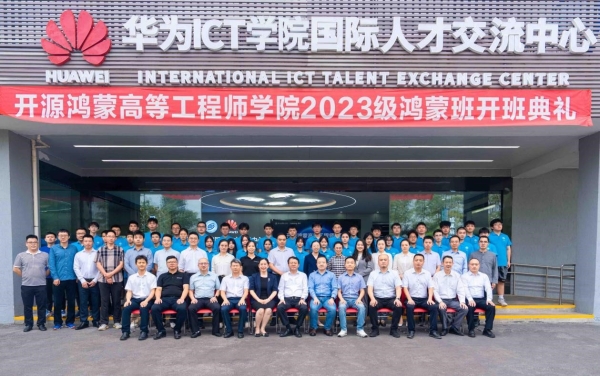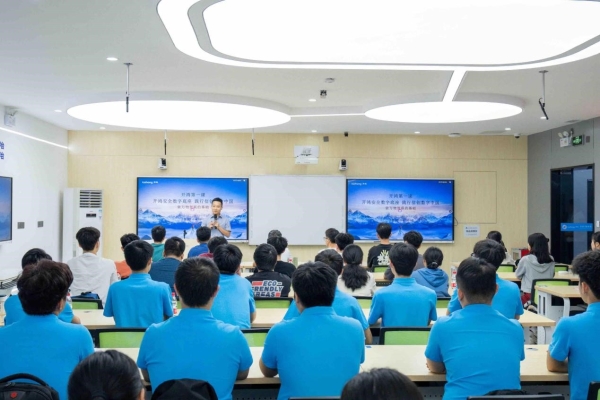文章来源:2023年10月17日 Shenzhen Daily

Teachers and students attending the first class on Huawei Technologies Co.'s HarmonyOS in a vocational education institute pose for a photo at Huawei's International ICT Talent Exchange Center last week. Photos courtesy of SZIIT
THE Shenzhen Institute of Information Technology (SZIIT) has launched a special class based on Huawei Technologies Co.’s self-developed operating system, HarmonyOS, to train China’s much needed digital talent.
By teaming up with Shenzhen Kaihong Digital Industry Development Co., a high-tech company focusing on intelligent internet of things operating systems, SZIIT opened the class last week and said it is the first of its kind in the field of vocational education in China to offer OpenHarmony courses to cultivate high-level engineers.
OpenHarmony is an open-source version of Huawei’s operating system HarmonyOS, or Hongmeng in Chinese, which was first launched in August 2019 and is designed for various devices and scenarios, including intelligent screens, tablets, wearables and cars.
Huawei donated the core structure package and all the basic capabilities related to the code of HarmonyOS to the OpenAtom Foundation, China’s first open source foundation, in 2020 and 2021, and participated in an open source project called OpenAtom OpenHarmony.
Huawei’s move is regarded as part of the Shenzhen-based tech giant’s broader push to solve China's lack of homegrown operating systems for fundamental digital technologies.
By the end of 2022, the OpenHarmony project had 51 collaborative units and more than 5,100 code contributors, resulting in nearly 100 million lines of code.
In various fields like education, transportation, finance, home automation, security and smart cities, more than 220 software and hardware products related to OpenHarmony have passed compatibility evaluations.
Wang Chenglu, once leading HarmonyOS developer and now CEO of Shenzhen Kaihong, said that domestically developed operating systems and platforms are crucial for national information technology innovation and development.

SZIIT students take a class on Huawei Technologies Co.'s HarmonyOS operating system last week.
According to Wang, building an operating system is not a simple task as it involves technology, industrial environment, talents and partnerships. OpenHarmony’s ecosystem development ultimately relies on a large talent pool.
SZIIT and Shenzhen Kaihong jointly set up the OpenHarmony Institute of Advanced Engineering in April, aiming to nurture high-level digital engineers with development and application capabilities of the OpenHarmony operating system.
Wang Hao, senior vice president of Shenzhen Kaihong, said during the first class that OpenHarmony is not a substitute for traditional operating systems, but a next-generation operating system designed for the era of artificial intelligence and internet of things.
Calling the class the OpenHarmony operating system’s Whampoa (Huangpu) Military Academy, a reference to China's first modern military institution which had trained many famous Chinese generals in the modern era, Wang said that the opening of the class at SZIIT will provide future engineers rare and valuable opportunities to grow and learn.
记者:杨云飞
出处:
http://www.shenzhentoday.net/web/html/20231017/1037e707-d721-49cc-bef1-246c95291ce8.html?level=2